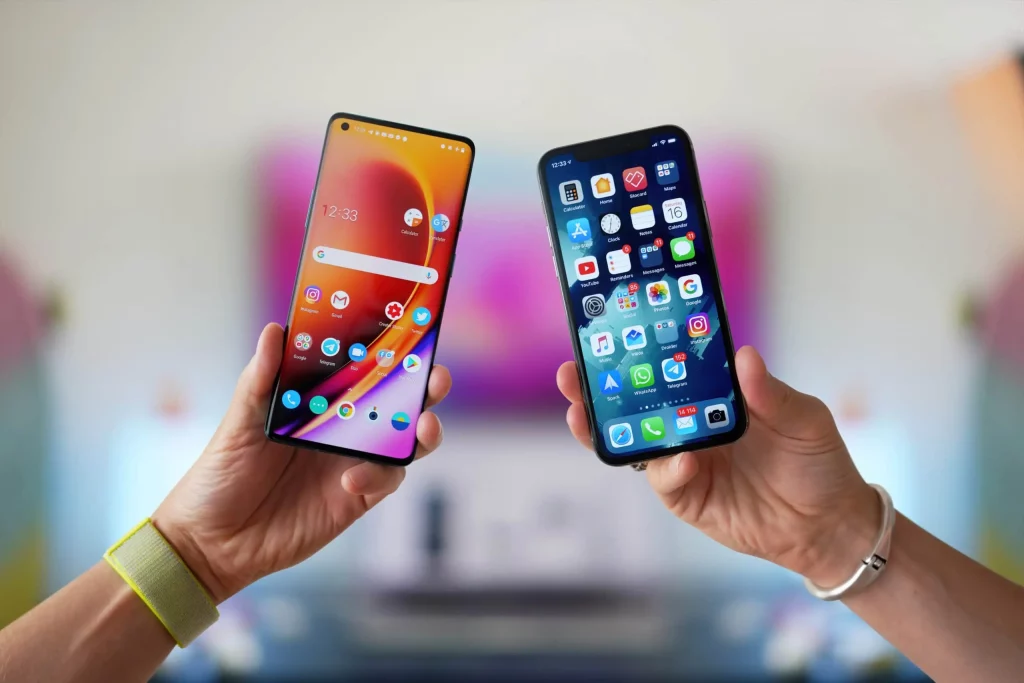Adverts
Switching from an Android operating system to iOS, present on Apple iPhones, is a decision that can bring new experiences and features to users.
However, this transition can also lead to frustrations due to the substantial differences between the two ecosystems.
Adverts
In this article, we'll look at some of the main reasons why switching to iOS can be annoying for those who are used to Android.
Limitations on Personalization: The Quest for Individuality
Adverts
One of the most striking features of Android is the freedom of customization it offers users. From choosing launchers and widgets to being able to customize the appearance of icons, Android allows users to transform their devices according to their preferences. However, when migrating to iOS, this freedom is considerably reduced. Users may experience frustration due to the lack of options to customize the user interface and icons on iOS, making their devices less expressive and unique.

File Sharing: Simplification versus Flexibility
File sharing is an essential task on our devices. In the Android environment, users enjoy the flexibility of transferring files using a variety of methods such as Bluetooth, NFC, and even USB cables. However, when switching to iOS, the file sharing process may become more restricted. The predominant reliance on iCloud and the relative difficulty of transferring files to non-Apple devices may irritate users accustomed to Android's more diverse approach.
Third Party Applications: Restrictions on Preference
See too:
The preference for third-party apps to default to specific functions, like web browsers and email apps, is something many Android users have become familiar with. However, when moving to iOS, users often encounter Apple's approach, which tends to keep its own apps as the default for various tasks. This situation can generate frustration for those who prefer alternative solutions, impacting the fluidity of the user experience, especially for those accustomed to the openness offered by Android.
Standard Keyboard: A Matter of Habit and Efficiency
The keyboard is a vital part of the smartphone usage experience. Android users often have the freedom to choose from a variety of third-party keyboards, adapting to their typing preferences and capabilities. However, transitioning to the standard iOS keyboard can trigger frustrations. Users may miss customization options and the ability to integrate alternative keyboards, which may affect their typing efficiency and comfort.
Virtual Assistant: The Switch from Siri to Google Assistant
Changing a virtual assistant can be an intriguing experience. Those used to Google Assistant may find the transition to Siri less fluid and less accurate in some situations. The effectiveness of the virtual assistant is vital for everyday tasks such as quick queries, reminders and navigation, and the change could generate irritation for those who feel that Siri does not meet their expectations set by Google Assistant.

Ecosystem Integration: Between Cohesion and Learning
The integration of devices within the same ecosystem is an advantage that Apple offers its users. Syncing between iPhones, iPads, and Macs can be effective for many, but for those who are used to an Android ecosystem, the transition can be challenging. Familiarizing yourself with a new set of services, applications, and practices can lead to frustration, especially if the user was deeply involved in the Android ecosystem.
Conclusion
Switching from an Android device to an iPhone with iOS is a journey full of new things and, inevitably, challenges. Limited customization, restrictions on file sharing, adaptation to the standard keyboard, changing virtual assistants and integration with a new ecosystem are factors that can trigger irritation among users. It's important to recognize that each operating system has its own advantages and disadvantages, and the transition can take time. As users adapt and explore the unique features of iOS, many of the initial frustrations can be overcome, resulting in a satisfying and rewarding experience.



